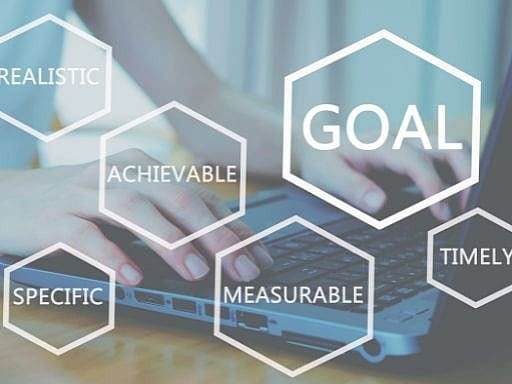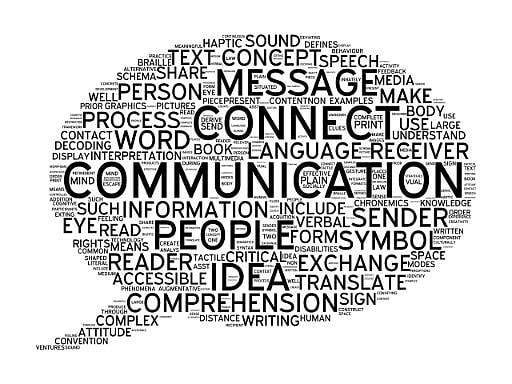Main Links

Last Updated February 12, 2025
 One of the most important parts of managing client expectations is setting clear goals, limits, and expectations. Keeping clients informed of the scope of the project, timeline and deliverables will help ensure that both parties are on the same page and that expectations are realistic.
Taking the time to discuss things in detail will help make sure everyone is on the same page and that expectations are managed properly. Setting goals, limits, and expectations is a key part of managing client expectations.
It is important to clearly define the scope of the project and make sure that the client is aware of what they can expect from the project. This can be done through open communication and the setting of realistic expectations.
Establishing clear goals, limits, and expectations will also help ensure that the project moves forward smoothly. Additionally, setting regular check-in points with the client will help keep expectations in check and ensure that everyone is on the same page.
This will also help to ensure that any changes or adjustments that need to be made are done promptly.
One of the most important parts of managing client expectations is setting clear goals, limits, and expectations. Keeping clients informed of the scope of the project, timeline and deliverables will help ensure that both parties are on the same page and that expectations are realistic.
Taking the time to discuss things in detail will help make sure everyone is on the same page and that expectations are managed properly. Setting goals, limits, and expectations is a key part of managing client expectations.
It is important to clearly define the scope of the project and make sure that the client is aware of what they can expect from the project. This can be done through open communication and the setting of realistic expectations.
Establishing clear goals, limits, and expectations will also help ensure that the project moves forward smoothly. Additionally, setting regular check-in points with the client will help keep expectations in check and ensure that everyone is on the same page.
This will also help to ensure that any changes or adjustments that need to be made are done promptly.
 When it comes to managing client expectations, communication is key. Being clear and upfront about what you can and cannot do for a client should be a top priority. This will help ensure that everyone is on the same page and that expectations are managed appropriately.
By being open and honest in your communication, you can create a solid foundation for client relationships. When it comes to managing client expectations, communication is key. It is important to be clear and upfront about what you can and cannot do for a client.
This will help ensure that expectations are managed appropriately. It is also important to be open and honest in your communication. Being able to clearly explain the details of a project, the timeline, and the expectations will help you create a trusting, respectful relationship with clients.
It is also important to be available and responsive to your client’s questions and concerns. By taking the time to listen and understand the needs of your clients, you can build a strong working relationship and better manage expectations.
When it comes to managing client expectations, communication is key. Being clear and upfront about what you can and cannot do for a client should be a top priority. This will help ensure that everyone is on the same page and that expectations are managed appropriately.
By being open and honest in your communication, you can create a solid foundation for client relationships. When it comes to managing client expectations, communication is key. It is important to be clear and upfront about what you can and cannot do for a client.
This will help ensure that expectations are managed appropriately. It is also important to be open and honest in your communication. Being able to clearly explain the details of a project, the timeline, and the expectations will help you create a trusting, respectful relationship with clients.
It is also important to be available and responsive to your client’s questions and concerns. By taking the time to listen and understand the needs of your clients, you can build a strong working relationship and better manage expectations.
 Managing client expectations is a key part of any successful business relationship. One of the most important things to remember when doing so is to always be upfront about any changes to shared plans.
This ensures that everyone is on the same page and that expectations are managed effectively. Being honest and open with your clients will help to foster a positive working relationship and will ultimately benefit both parties in the long run.
When making changes to a shared plan, it is important to ensure that everyone involved is informed and aware of the changes. This can be done through clear and concise communication, as well as through setting up regular meetings to discuss any changes.
Additionally, it is important to provide a timeline for when changes will take effect, and be willing to answer any questions or concerns that may arise. Being upfront about any changes will help to minimize any confusion.
Being upfront about any changes will help to minimize any confusion. Having a transparent and honest dialogue with clients is the best way to ensure that any changes are accepted and understood. It is also important to understand that not all changes may be welcomed, so it is important to remain flexible and open-minded in order to reach the best possible outcome.
Managing client expectations is a key part of any successful business relationship. One of the most important things to remember when doing so is to always be upfront about any changes to shared plans.
This ensures that everyone is on the same page and that expectations are managed effectively. Being honest and open with your clients will help to foster a positive working relationship and will ultimately benefit both parties in the long run.
When making changes to a shared plan, it is important to ensure that everyone involved is informed and aware of the changes. This can be done through clear and concise communication, as well as through setting up regular meetings to discuss any changes.
Additionally, it is important to provide a timeline for when changes will take effect, and be willing to answer any questions or concerns that may arise. Being upfront about any changes will help to minimize any confusion.
Being upfront about any changes will help to minimize any confusion. Having a transparent and honest dialogue with clients is the best way to ensure that any changes are accepted and understood. It is also important to understand that not all changes may be welcomed, so it is important to remain flexible and open-minded in order to reach the best possible outcome.
 When managing client expectations, it's important to avoid making any unrealistic promises. Setting expectations too high can lead to disappointment and frustration down the road.
Instead, make sure to be realistic and honest about what can be accomplished and when. This way, clients are more likely to be satisfied with the result. When making promises to clients, it's important to ensure that they are realistic and achievable.
Unreasonable expectations can lead to frustration and disappointment, so it's important to set realistic goals and timelines. Instead of making grandiose statements, focus on specifics and be honest about what can be realistically accomplished.
Be sure to provide regular updates on progress, and if any changes need to be made, communicate them to the client promptly. Don't be afraid to ask for help if needed, and be prepared to adjust plans as needed.
By setting realistic expectations from the start, clients are more likely to be satisfied with the result.
When managing client expectations, it's important to avoid making any unrealistic promises. Setting expectations too high can lead to disappointment and frustration down the road.
Instead, make sure to be realistic and honest about what can be accomplished and when. This way, clients are more likely to be satisfied with the result. When making promises to clients, it's important to ensure that they are realistic and achievable.
Unreasonable expectations can lead to frustration and disappointment, so it's important to set realistic goals and timelines. Instead of making grandiose statements, focus on specifics and be honest about what can be realistically accomplished.
Be sure to provide regular updates on progress, and if any changes need to be made, communicate them to the client promptly. Don't be afraid to ask for help if needed, and be prepared to adjust plans as needed.
By setting realistic expectations from the start, clients are more likely to be satisfied with the result.
 When it comes to managing client expectations, it's important to focus on building long-lasting relationships. Understanding the client's expectations for the project can go a long way in creating a successful outcome.
Clear communication and setting realistic goals are key to maintaining a trusting relationship. Building long-lasting relationships with clients are essential for any business.
It allows you to build trust with your clients, provides stability and continuity, and helps to build loyalty. To build and maintain a good rapport, it is important to communicate regularly, respond to customer inquiries promptly, and ensure that expectations are clear and realistic.
Additionally, it is essential to be transparent with clients, address any issues as they arise, and always strive for mutually beneficial solutions. Keeping these elements in mind will help to create a long-term relationship and ensure that both parties are satisfied with the final product.
When it comes to managing client expectations, it's important to focus on building long-lasting relationships. Understanding the client's expectations for the project can go a long way in creating a successful outcome.
Clear communication and setting realistic goals are key to maintaining a trusting relationship. Building long-lasting relationships with clients are essential for any business.
It allows you to build trust with your clients, provides stability and continuity, and helps to build loyalty. To build and maintain a good rapport, it is important to communicate regularly, respond to customer inquiries promptly, and ensure that expectations are clear and realistic.
Additionally, it is essential to be transparent with clients, address any issues as they arise, and always strive for mutually beneficial solutions. Keeping these elements in mind will help to create a long-term relationship and ensure that both parties are satisfied with the final product.